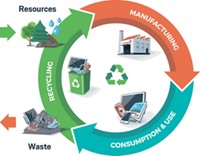Advertisement
Grab your lab coat. Let's get started
Welcome!
Welcome!
Create an account below to get 6 C&EN articles per month, receive newsletters and more - all free.
It seems this is your first time logging in online. Please enter the following information to continue.
As an ACS member you automatically get access to this site. All we need is few more details to create your reading experience.
Not you? Sign in with a different account.
Not you? Sign in with a different account.
ERROR 1
ERROR 1
ERROR 2
ERROR 2
ERROR 2
ERROR 2
ERROR 2
Password and Confirm password must match.
If you have an ACS member number, please enter it here so we can link this account to your membership. (optional)
ERROR 2
ACS values your privacy. By submitting your information, you are gaining access to C&EN and subscribing to our weekly newsletter. We use the information you provide to make your reading experience better, and we will never sell your data to third party members.
Environment
Government Roundup
December 9, 2013
| A version of this story appeared in
Volume 91, Issue 49
Northwestern University will lead a new advanced materials research center created through a $25 million, five-year award from NIST. The Center for Hierarchical Materials Design will focus a consortium from academia and industry on designing materials using new computational tools, databases, and experimental techniques.
EPA and USDA are coordinating policies and programs that support water quality trading, a market-based approach to controlling nutrient discharges into waterways. Such markets allow water polluters to discharge more nitrogen and phosphorus when they buy credits from polluters who discharge less than mandated limits.
Trichloroethylene would be listed as a reproductive toxicant under California’s Proposition 65, under a proposed change by the state’s Office of Environmental Health Hazard Assessment. The proposal is based on a 2011 EPA health assessment of the solvent.
Flame retardants tetrabromobisphenol A, tetrabromobisphenol A bis(2-hydroxyethyl ether), and tetrabromobisphenol A bis(allyl ether) do not meet criteria for regulation in Canada. Regulators concluded that the chemicals aren’t entering the environment in amounts that endanger human health or the environment in the nation.
The phaseout of hydrofluorocarbons should be accelerated in the U.S. and globally, Democrats from the Senate and House of Representatives told the EPA administrator in a letter last week. HFCs are potent greenhouse gases. “We encourage you to focus your agency on HFC applications where technology solutions and alternative products are already available or soon to be in the market,” the lawmakers wrote.
NIH plans to redirect $100 million over the next three years to support research aimed at finding a cure for HIV. The money is expected to fund basic research on viral reservoirs, viral latency, viral persistence, and neutralizing antibodies, as well as development of more potent antiretroviral drugs.




Join the conversation
Contact the reporter
Submit a Letter to the Editor for publication
Engage with us on Twitter